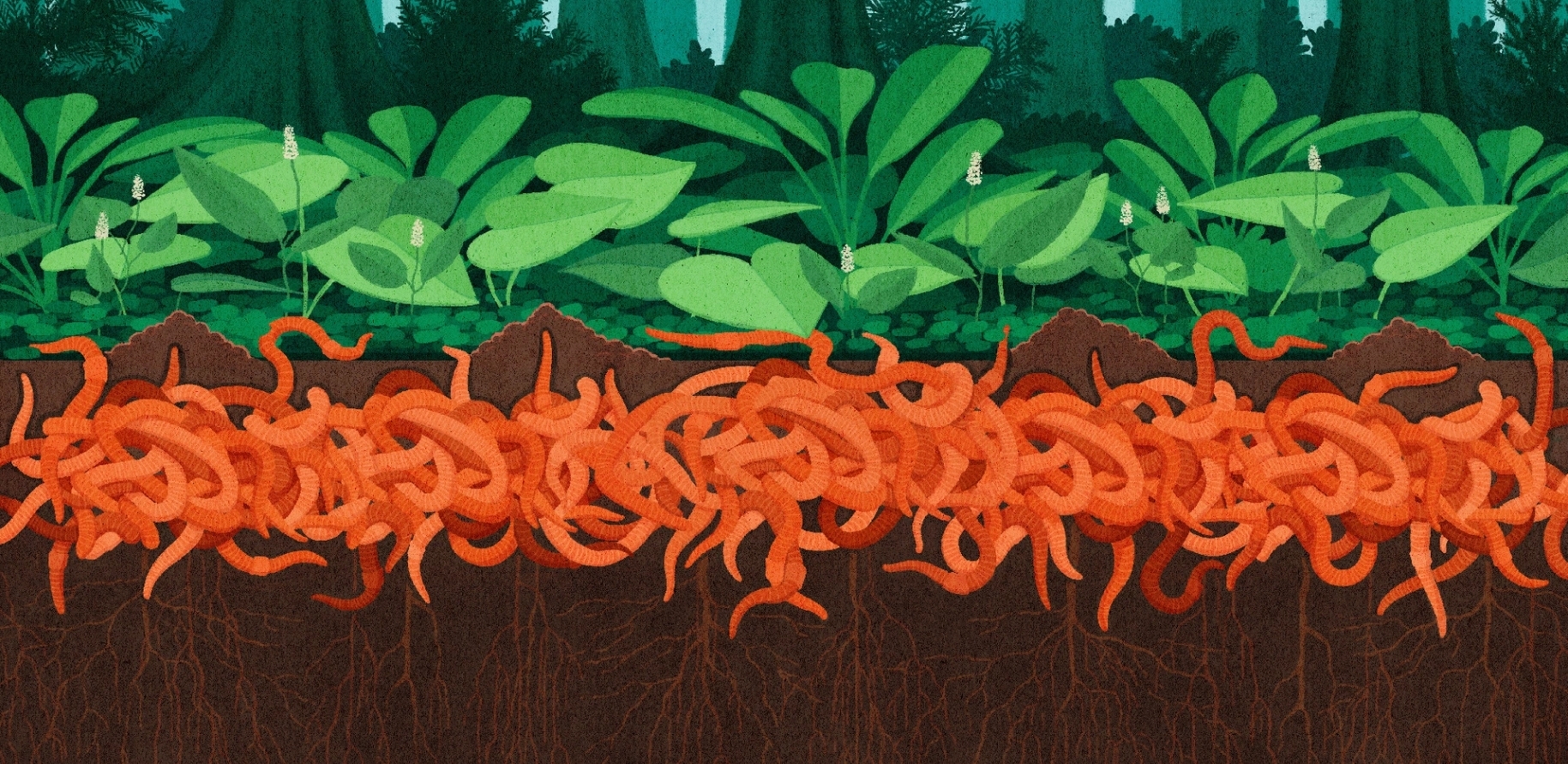Welcome to DU!
The truly grassroots left-of-center political community where regular people, not algorithms, drive the discussions and set the standards.
Join the community:
Create a free account
Support DU (and get rid of ads!):
Become a Star Member
Latest Breaking News
General Discussion
The DU Lounge
All Forums
Issue Forums
Culture Forums
Alliance Forums
Region Forums
Support Forums
Help & Search
The DU Lounge
Showing Original Post only (View all)Cancel Earthworms [View all]
The “crazy worms” remaking forests aren’t your friendly neighborhood garden worms. Then again, those aren’t so great either.https://www.theatlantic.com/science/archive/2020/01/jumping-worms-are-taking-over-north-american-forests/605257/

On a sweltering July day, I follow Annise Dobson down an overgrown path into the heart of Seton Falls Park. It’s a splotch of unruly forest, surrounded by the clamouring streets and cramped rowhouses of the Bronx. Broken glass, food wrappers, and condoms litter the ground. But Dobson, bounding ahead in khaki hiking pants with her blond ponytail swinging, appears unfazed. As I quickly learn, neither trash nor oppressive humidity nor ecological catastrophe can dampen her ample enthusiasm. At the bottom of the hill, Dobson veers off the trail and stops in a shady clearing. This seems like a promising spot. She kicks away the dead oak leaves and tosses a square frame made of PVC pipe onto the damp earth. Then she unscrews a milk jug. It holds a pale yellow slurry of mustard powder and water that’s completely benign—unless you’re a worm. Seconds after Dobson empties the contents inside the frame, the soil wriggles to life. “Holy smokes!” she says, as a dozen worms come squirming out of the soil—their brown, wet skin burning with irritation. “Disgusting.”
I have to agree. There is something unnerving about their slithering, serpentine style; instead of inching along like garden worms, they snap their bodies like angry rattlesnakes. But the problem with these worms isn’t their mode of locomotion. It’s the fact that they’re here at all. Until about 10,000 years ago, a vast ice sheet covered the northern third of the North American continent. Its belly rose over what is now Hudson Bay, and its toes dangled down into Iowa and Ohio. Scientists think it killed off the earthworms that may have inhabited the area before the last glaciation. And worms—with their limited powers of dispersal—weren’t able to recolonize on their own. For someone like me, who grew up in the Midwest seeing earthworms stranded on the sidewalk after every rain, this was a shocking revelation. With the exception of a few native species that live in rotting logs and around wetlands, there are not supposed to be any earthworms east of the Great Plains and north of the Mason-Dixon Line.
But there are, thanks to humans. We’ve been moving worms for centuries, in dirt used for ship ballast, in horticultural plants, in mulch. Worms from South America now tunnel through the global tropics. And European earthworms live on every continent except Antarctica. Dobson, a forest ecologist at Yale University, calls it “global worming.” But of all the earthworms people have shuttled around the world, the ones Dobson shows me at Seton Falls have scientists most concerned. Originally from Korea and Japan, they are known as jumping worms, snake worms, or crazy worms. And they have the potential to remake the once wormless forests of North America. The perils of an earthworm invasion are hard to grasp if you’ve been raised to believe that earthworms are good. “They seem so symbolic of a healthy ecosystem,” Dobson says. For their stellar reputation, they can thank none other than Charles Darwin. In addition to developing the theory of evolution, Darwin studied earthworms for 40 years at his home in England.
With characteristic curiosity and rigor, the naturalist conducted all manner of earthworm experiments: He observed their reaction to the sound of the bassoon (none) and to the vibrations of a C note played on the piano (panic). He watched how they pulled leaves into their burrows, and tested their problem-solving skills by offering them small triangles of paper instead (most figured out how to drag them by a corner). Darwin also measured how quickly worms covered up a large paving stone in his garden with their castings. He estimated that they could move at least 10 tons of soil per acre per year. Dirty, slimy earthworms weren’t especially popular in Victorian England. But in 1881, shortly before his death, Darwin compiled his worm studies into a book called The Formation of Vegetable Mould through the Action of Worms with Observations on their Habits, in which he praised the humble critters. “It may be doubted whether there are many other animals which have played so important a part in the history of the world, as have these lowly organized creatures,” he rhapsodized. The book became a best seller, giving worms’ dingy public image a makeover in the process.
snip
InfoView thread info, including edit history
TrashPut this thread in your Trash Can (My DU » Trash Can)
BookmarkAdd this thread to your Bookmarks (My DU » Bookmarks)
2 replies, 560 views
ShareGet links to this post and/or share on social media
AlertAlert this post for a rule violation
PowersThere are no powers you can use on this post
EditCannot edit other people's posts
ReplyReply to this post
EditCannot edit other people's posts
Rec (2)
ReplyReply to this post
2 replies
 = new reply since forum marked as read
Highlight:
NoneDon't highlight anything
5 newestHighlight 5 most recent replies
= new reply since forum marked as read
Highlight:
NoneDon't highlight anything
5 newestHighlight 5 most recent replies